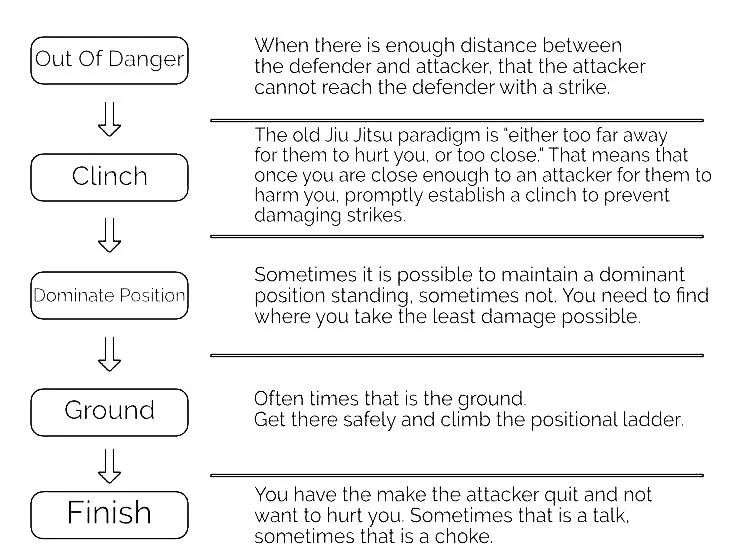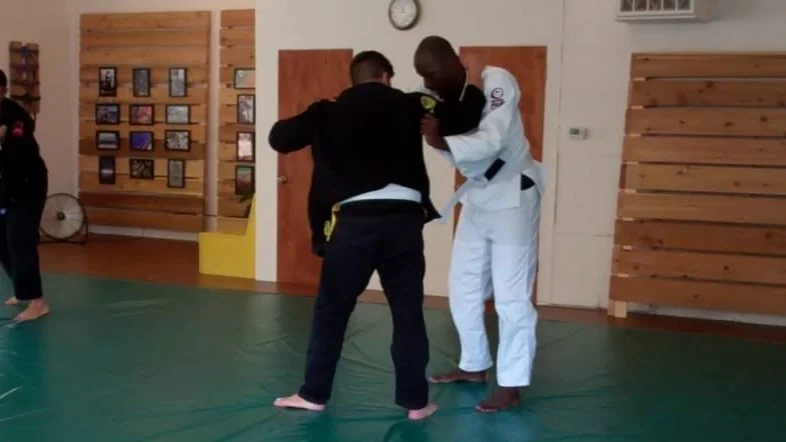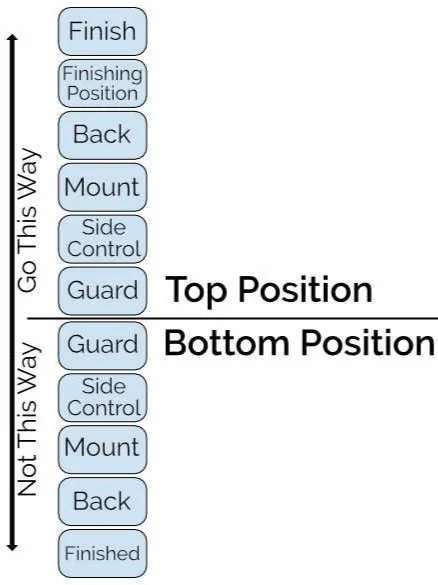The Basic Jiu Jitsu Approach to Self Defense
Brazilian Jiu Jitsu follows an extensively tested self defense strategy that works very well for one on one physical contests and many self defense situations. It is such a successful strategy in fact, that the original UFC was little more than a live infomercial for the Gracie family. The family actually started the event and entered one of their weaker, less experienced, family members, (Royce Gracie), in order to demonstrate the effectiveness of the art. As a family, they didn’t just put Jiu Jitsu on the map, they put it on top of the martial arts hierarchy.
Since then, the world, and modern MMA, have advanced - considerably. Prior to the UFC starting in 1993, martial arts academies could basically claim whatever they wanted with no need for corresponding evidence. Now, when a claim of fighting effectiveness is made you can simply look at the professional fighting that happens every weekend to see if those claims hold water. In theory this would make it easy for you, the not professional fighter, to see what works and what doesn’t. The problem with that is that there is a pretty big difference between professional fighting vs actual self defense. Aren’t those the same thing though? Not really.
Fighting vs Beating Someone Up.
You probably aren’t signing up to be an ultimate fighter. All good - that’s not why most people are at the academy. That said, whether you want to learn basic self defense or work your way to the octagon, both tasks begin in the same place - Don’t Get Beat Up.
Jiu Jitsu is a defense first martial art, meaning, our first goal is to not get hurt. This sounds like table stakes, and it is, it is just an easy point to lose when you are training. Jiu Jitsu employs a “positional hierarchy” to accomplish this goal. This is just a way to say we rank the various grappling positions in terms of safety and begin our defense in the safest postion we can get to. The task then becomes, not to beat the other person up, but rather to climb the ladder of positional hierarchy to a safer and safer position. The end goal is the same as the start - don’t get hurt and don’t let your position get worse.
The hallmark example of this of course is what Jiu Jitsu is famous for - obtaining and securing the back position. If someone means you harm, and you know how to get to their back and stay on it, it becomes very difficult for them to hurt you. If the situation warrants, the person holding the back can safely render the aggressor unconscious using Jiu Jitsu. If this were easy all fighters would do it. It is in fact often not easy, particularly if you don’t know the difference between fighting and beating someone up.
Learning to fight means learning to accept difficulties and potential failure. Beating someone up is a one sided affair and does not make one a martial artist. The process of becoming a martial artist exposes you to a great amount of difficulty and failure in a somewhat safe academy setting.
This exposure to training allows you and your partners to become skilled. That skill, born out of facing adversity and becoming accustomed to struggle, builds confidence in your ability to defend yourself should the situation arise. The struggle is fighting for position in the positional hierarchy. It is key to the Jiu Jitsu approach to self defense.
Here is the general self defense path Jiu Jitsu uses from the feet to the floor.
Of the fight stages shown above - the ground work is the most difficult to understand. The rest of it makes sense. If two people start fighting and begin punching each other - they tend to end up in a standing clinch where they wrestle for a position, (and wrestle to not get hit!). It is not difficult or uncommon for this to end up on the ground.
If you don’t know Jiu Jitsu being on the ground is a pretty horrible place to be in a fight. If you do, the ground becomes a place of safety. Moving well on the ground, especially with regards to fighing, takes a lot of intentional practice. Knowing how to move well on the ground and navigate the positional hierarchy is one of the things that makes Jiu Jitsu a super power. Lets get a better look
The Clinch
It is fairly easy to turn a stand up fight into a standup wrestling match. Another name for this is the clinch.
The Guard
If you are knocked to the ground while your opponent is above you - it is important to get your legs between yourself and your partner. This position is called the guard. It takes a fair amount of work to develop skill here. However once skill is acquired the position offers a surprising amount of offense.
Side Control
Top side control is a great position to be in. Bottom side control is a bad place to be! This position is more open to scrambles than you may think. If you wind up on bottom - replace your guard or get up. If you are on top - try to find the mount or back positions
Mount
Escaping mount is fairly straight forward if you know Jiu Jitsu. If you don’t know Jiu Jitsu efforts to escape the mount position usually just help the top person obtain the back.
Back Control
The hallmark position of Jiu Jitsu. If you have the back it is kind of hard for you to get beat up. If someone has your back….. try to get out with out getting finished!
The hierarchy could be represented like this
How do we approach studying this in class?
While positions and moves give us a vocabulary for the material, there is much more to Jiu Jitsu; transitions, pacing, pressure, timing, and strategy for example. We do use positions as a basis for the study and we will spend 1-3 months on each position. As the time of study proceeds, we add in other positions or elements of interest as the curriculum block builds.
The only way to get good at navigating the positional hierarchy is to get good at coming to class! That isn’t said as abscence shaming. If learning Jiu Jitsu was easy there would be many more high level practitioners. Getting good at coming to class is something you can train if you have a better understanding of the training principles common to most mats. Here are some of ours.






